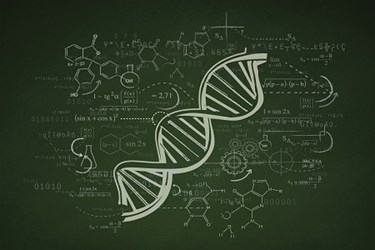Genomics & Tissue Phenomics: Taking A Dual Approach To Drug Development

By Gerd Binnig, PhD, Founder and CTO, Member of the Executive Board, Definiens
It can be said that 2014 was the year of genomics. The industry saw several new startups in the area, and Google's venture into the genomics market made a big splash. However, in 2015 the industry is expected to look beyond genes and focus on a dual approach to drug development leveraging data from both the genes and the tissue, particularly in oncology.
Tissue phenomics, which involves extracting and analyzing tissue data, provides researchers new insights into tissue-based biomarkers, which are critical to improving patient outcomes and fulfilling the promise of personalized medicine. Pharmaceutical and biotech companies are now looking at tissue phenomics to unlock the possibilities of drug development. Tissue phenomics in conjunction with genomics is enabling researchers to develop more effective diagnostics and therapies, and ultimately help improve the treatment of patients.
Genomics Have Soared
Genomics have played an important role in drug discovery & development for quite some time. Over the last year we have seen significant advancements in the area, and as genomics become cheaper and cheaper, the discipline is being utilized more than ever before. Gene sequencing is critical to drug R&D and it is now ubiquitous in the industry – it’s available in every lab and clinic worldwide, which was unheard of a few years ago.
Now that genomics have become ingrained in the drug development process, however, the need is emerging to look beyond the genes and include tissue data in drug research as well. Genomics, while critical, only tell half the story.
Bringing Tissue To The Equation
With genomics, everything is quantifiable. Genetic code and sequences are well defined in mathematical terms, and that ability to be precise is incredibly important. In pathology, it is well understood that a significant amount of powerful information, particularly in cancer diagnosis and treatment, exists in tissue slides or digital images of tissue. However, that information has essentially been “locked” or only viewable by visual inspection, and only recently have pathologists been able to actually quantify those tissue slides and make the data as precise and mathematical as genomic data. This is possible through tissue phenomics.
Tissue phenomics enables researchers to use automated image analysis to extract all the relevant objects in tissue and then measure and analyze them. The first step here is tissue datafication, which involves detecting, structuring, and quantifying relevant objects, regions, and textures in tissue samples. That data is then aggregated into statistical descriptions of the tissue samples, which prepares it for data mining and analysis. By also applying a big data approach to the numbers researchers can now glean from tissue, much more knowledge can be gained and applied to drug discovery and development. In other words, not only can researchers quantify tissue slides and make observations from them, but they can then use a big data approach to compare the tissue data to clinical outcomes, drug response data, their own knowledge and research, and more. Having this potential opens up a new world of possibilities for pharmaceutical R&D.
Tissue Phenomics Applications
Access to accurate, quantifiable tissue data combined with genomic data supports drug discovery and development in multiple ways. It enables better biomarker identification and companion diagnostics for patient stratification, helps researchers identify the right molecules and indications to move through the clinical trial pipeline, and ultimately enables pharmaceutical companies to bring targeted drugs to market faster with smaller and more effective clinical trials. For drug R&D, perhaps the biggest value is in actually developing the drug and bringing it to the market.
If a pharmaceutical company develops a drug that doesn’t make it through the trial process, it represents a huge drain on both time and financial resources. The industry needs to focus on developing drugs that are truly meaningful, with proven medical value.
In particular, over the last few years combination molecules have played an increasing role in oncology therapies, and this research becomes even more complicated as it includes multiple drugs and a significant number of possibilities. Companies need to know early in the game which combinations are worth pursuing so they don’t inadvertently waste resources on a drug with a medical value that cannot be proven. Tissue phenomics can play an important role in this regard. Tissue phenomics enables researchers to conduct experiments that aren’t possible through visual tissue inspection or genomics alone, make better predictions about treatments and outcomes, and finally see in early phases which combinations are promising, have a high potential for success, and should be moved through the pipeline.
A dual use of both genomics and tissue phenomics, combined with a big data approach, will support personalized drug development and help reach the ultimate goal of significantly impacting patient lives.
A Shift Is On The Horizon
More companies and researchers are working with a combination of genomic and tissue data every day, and as their breakthroughs and success stories travel, it will change how these companies approach the process of drug discovery and development. Having these powerful tools in hand can speed up drug R&D and make it more successful, and the excitement around the possibilities is building. A shift in the way drugs are developed is happening now. If 2014 was the year of genomics, 2015 will be the year of tissue phenomics.
About The Author
Dr. Gerd Binnig is Founder and Chief Technology Officer of Definiens, a provider of image analysis and data mining solutions for tissue diagnostics and clinical digital pathology. He is also a member of the Executive Board. Dr. Binnig was awarded the Nobel Prize in Physics for his work in scanning tunneling microscopy. He has more than 30 years experience in the physics community and developed Definiens’ patented Cognition Network Technology.
